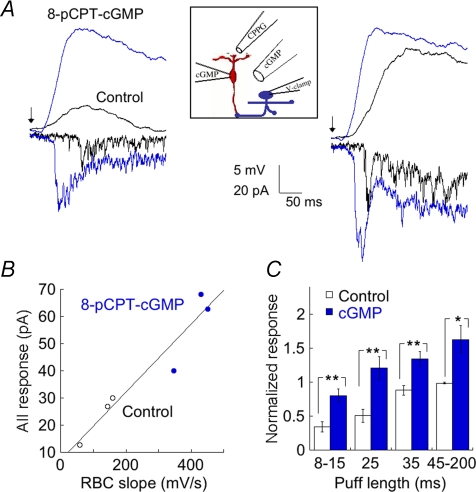Figure 6. Potentiation of RBC responses by cGMP in turn potentiates AII EPSCs.
A, averaged response of an RBC–AII pair to an 8 ms puff (left), or 50 ms puff (right) of CPPG following break in (black trace) and after local application of 1 mm 8-pCPT-cGMP (blue trace in the online version). Inset, experimental protocol; in some experiments, cGMP was dialysed directly into individual RBCs, while in others, such as the one shown here, it was added in a membrane-permeant form. B, left, effects of cGMP on the rate of depolarization of the RBC and the peak AII response from the pair shown in (A). Puff lengths were 8 ms, 35 ms and 200 ms. Open symbols are before and filled symbols are after 8-pCPT-cGMP application, respectively. C, summary of the effects of cGMP on AII response amplitude as a function of puff duration. Data from bath and intracellular application of cGMP have been pooled, and puff lengths have been binned as labelled. n= 8 for all puff length bins except for 25 ms (n= 6).

